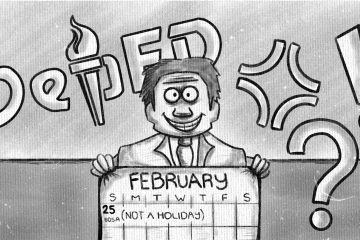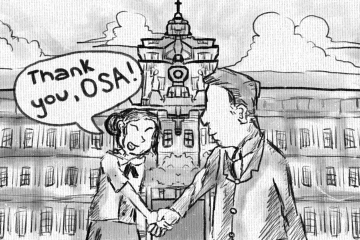 WALKING, though it may sound superficial, is one of the most efficient methods of commute. Walking short distances to school or work costs nothing, promotes a healthy lifestyle, and reduces one’s carbon footprint.
WALKING, though it may sound superficial, is one of the most efficient methods of commute. Walking short distances to school or work costs nothing, promotes a healthy lifestyle, and reduces one’s carbon footprint.
But here in Manila, walking is a stressful and perilous activity for everyone. To begin with, sidewalks are too narrow to walk on—if not absent.
It fails to serve its original purpose; instead of being an area where people can stroll, our sidewalks serve as makeshift markets, police outposts, parking lots, illegal terminals, and even nooks for petty criminals.
Even in the streets outside the University, the students are at risk of being side swept by vehicles just by avoiding manong fishball or ate lemonade doing their business.
My friend once told me that the LRT 2 Legarda station is just a walking distance from the campus. If not for the illegal stalls and road projects that take forever to finish at Earnshaw Street, along with the sketchy people lurking at night, she would opt to walk instead of riding the tricycle.
At this point, I am now starting to believe author Dan Brown when he branded Manila in his latest book Inferno as “the gates of hell.”
Sidewalks are for public use. The Supreme Court has ruled that the occupation and use by private individuals of sidewalks and other public places devoted for public use is illegal. However, it is sad to know that this is still not clear to everyone. What is more saddening is that some government units seem to approve and even sponsor activities to discourage the proper use of it.
For example, some barangays are issuing permits to allow ambulant vendors to do business on sidewalks. Some barangays are also lenient whenever the sidewalks are being cordoned to serve as parking spaces. Based on a report by TV Patrol last year, some portions of the sidewalk of EDSA side of Camp Crame will be chopped off to accommodate another lane for private vehicles.
With this horrible treatment to our sidewalks, it seems to me that Manila is growing to be friendlier to vehicles than it should be to its pedestrians.
This behavior of Metro Manila favoring cars over its people indeed has adverse effects. Since our sidewalks are not conducive to walking, pedestrians who intend to walk short distances will be forced to use their cars or ride jeepneys. This trend will lead to heavier traffic, dirtier air, and a sedentary lifestyle. Manila will not thrive if the citizens continue to behave this way. In other countries, the government, with the support of the people, is exerting efforts to make their cities more conducive to live in.
In Oslo, the Norwegian capital, cars will be prohibited from entering the city center by 2019. New York repurposed some lanes for cars to widen the sidewalks. In Barcelona, some streets are being converted to pedestrian zones where people can hang around, dine, and enjoy. The results of such superblocks are astounding: the businesses around the area are booming, tourists are flocking, and the air pollution around the vicinity dropped significantly.
It is high time for the government to work hand-in-hand with the public to reevaluate where Manila is heading. Widen our sidewalks. Invest and promote the use of public transportation system. Introduce scheduled trips. Plant more trees. Make smart and sustainable choices to make our city healthier and more livable.
Prove to everyone that we are not living in “the gates of hell.” F



